Imagine a breakthrough cancer drug comes on the market that is so much better than what was previously available that it needs almost no marketing -- doctors hear about it from the medical literature and start prescribing it immediately. The drug was developed by a researcher at a major public university with 90 percent of the funding coming from public sources like the National Institutes for Health and other non-profit sources. Now imagine that the National Institutes of Health funds more than 100 clinical trials to study the drug. Now imagine that a multinational drug company picks up the ball for the final push -- it funds the final trials of a few thousand people and identifies how to turn the medicine into a pill of the right dosage for patients to take. Now imagine that after a few years that drug company invents a new type of pill that is better for storage and absorption.
Is giving that company a whole new 20-year patent on this new version of the pill, which would prevent lower-cost versions of the medicine from being made, the best public policy for cancer patients? Is it really needed to spur innovation? What if we imagine that pill makes the drug company more than $300 million every month?
This week, as the front page of the New York Times noted the Indian Supreme Court said "no."
The Swiss pharmaceutical giant Novartis sued the Indian government for rejecting its patent on a new "beta crystalline" form of the cancer drug Gleevec. Indian law, unlike U.S. law, says that manufacturing a new form of an existing substance is not a patent-worthy invention if it does not improve significantly the effectiveness for patients. So when Novartis applied for a new patent on a drug that was not eligible for patenting otherwise, the court refused to order affordable generic versions of the drug to be pulled from the shelves in India.
This case had major global implications, since Indian generic companies supply 80 percent of the world's generic AIDS medicines -- used throughout Africa and the developing world to halt the virus that has killed so many. Many of those drugs are allowed to be made and marketed in India precisely because India only grants patents on truly new inventions. Kaletra, for example, the HIV drug Magic Johnson helps market here in the U.S., did not receive a new patent in India on a substance invented decades ago -- and as a result it is available for a few hundred dollars in Africa instead of the nearly $10,000 a year charged in the U.S.
Novartis and big pharma are, not surprisingly, decrying the decision -- Novartis even threatened to stop supplying the country with medicine. A whole host of misinformation has been pouring out of the purported experts. Phrma, the U.S. lobbying arm of the multinational pharmaceutical industry, expressed its disappointment and declared a "deteriorating innovation environment in India."
But is it deteriorating? Compared to what?
In the U.S., 75 percent of "new" drugs approved by the FDA are actually so-called "me-too" drugs -- a medicine designed to compete directly with an existing profitable drug with some changes to make it more appealing. Once we had Viagra, we quickly had Cialis that acts more quickly, Levitra that lasts longer, Stendra that acts quicker and lasts longer, and Staxyn that dissolves in your mouth instead of swallowing a pill. Each of these is covered by multiple patents and, while I'm sure diversity in the market for erectile dysfunction is important to some, this teaches us two important things:
- 1) It's a lot easier to "invent" a drug that simply makes a minor change for an existing condition rather than creating that major next inventive step that will truly improve people's health.
Remember this is the patent system that led Smuckers to seek patents on the crustless peanut butter and jelly sandwich as an invention.
But what if you want to incentivize investment in bold new drugs instead of me-too drugs? What if you want to encourage research into new areas that tangibly improve people's health? Then maybe, like India, you would only grant patents when that higher standard is met. Instead of decrying India's "deteriorating" innovation, maybe those of us who care about health should be taking a hard look at India and asking what the country can teach us about our own broken innovation system.
Gleevec was funded with hundreds of millions in taxpayer and non-profits funding -- and the result was a breakthrough cancer treatment that keeps many alive. Jamie Love, the director of Knowledge Ecology International estimates Novartis invested between $38 and $96 million in research for Gleevec. But the company charges patients here in the United States as much as $98,000 per year for the drug -- pulling in $4.675 billion in sales of the drug every year. So we paid for much of its development and then we pay monopoly prices to get the drugs? Where exactly is the incentive for Novartis to invest the big bucks to invent something brand new?
The Obama administration is currently negotiating the Trans Pacific Partnership Free Trade Agreement that would lock other countries, and the U.S., into the patent system we have now. It would prevent us, and dozens of countries in the Asia-Pacific region, from adopting exactly the kind of strict patent standards India has.
But maybe it is the U.S., not India, that has a "deteriorating innovation environment." And if so, the last thing we should do is lock in a broken system for the future.
For more by Matthew Kavanagh, click here.
For more health news, click here.